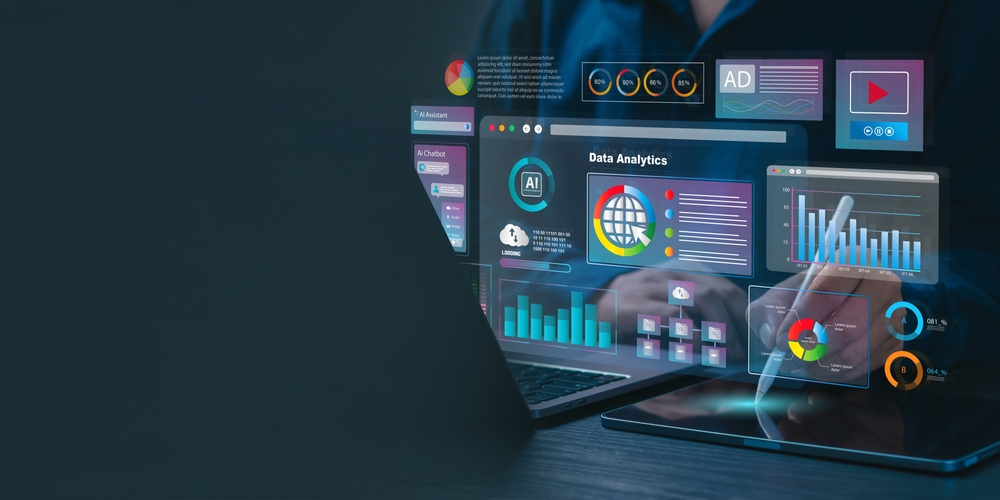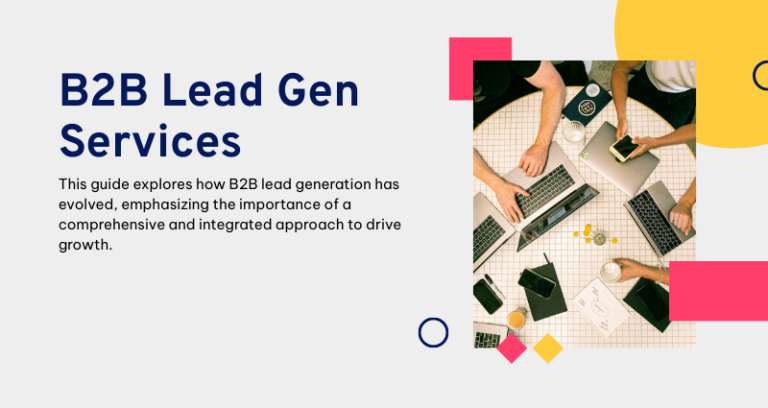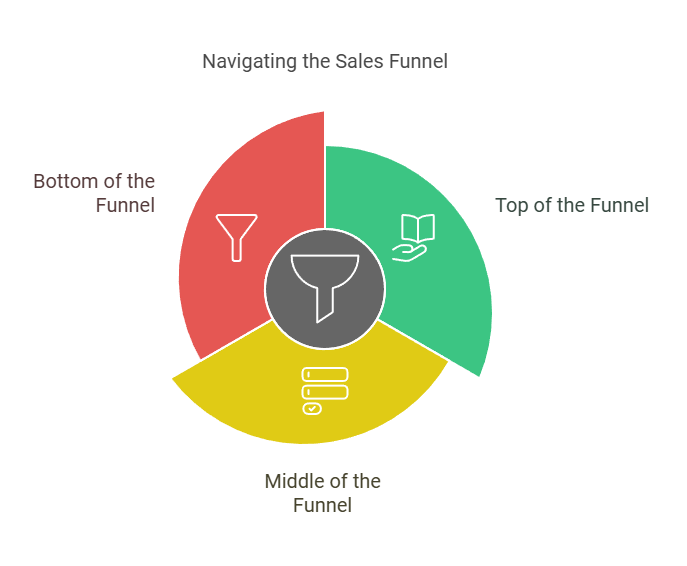
The Central Role of Marketing Leads in Business Success
Marketing leads are the lifeblood of any business. Without a steady stream of potential customers, companies struggle to grow and sustain profitability. But what exactly is a marketing lead, and why is it so crucial? A marketing lead is an individual or organization that has shown interest in a company’s products or services. This interest can be demonstrated in various ways, such as filling out a contact form, signing up for a webinar, or engaging with a brand’s social media content.
Marketing leads are more than just names on a list. They are potential customers with unique needs, behaviors, and preferences. Businesses must implement strategic lead generation and nurturing tactics to convert these leads into paying customers.
Understanding Marketing Leads: Definitions and Classifications
Marketing leads can be categorized into different types based on their level of engagement and readiness to make a purchase. Understanding these classifications helps businesses prioritize their efforts and tailor their approach accordingly.
Types of Marketing Leads
- Marketing Qualified Leads (MQLs)
MQLs are prospects who have engaged with a brand’s marketing efforts but are not yet ready for direct sales contact. They may have downloaded a whitepaper, signed up for a newsletter, or attended a webinar. - Sales Qualified Leads (SQLs)
SQLs are leads that have shown strong buying intent. They may have requested a demo, filled out a pricing form, or engaged in direct conversations with the sales team. - Product Qualified Leads (PQLs)
PQLs are individuals who have tried a company’s product—often through a free trial or freemium model—and have shown interest in upgrading to a paid plan. - Service Qualified Leads (SQLs)
These leads are existing customers who have expressed interest in purchasing additional services or upgrades. - Cold, Warm, and Hot Leads
- Cold Leads have little to no engagement with the brand.
- Warm Leads have interacted with marketing content but need further nurturing.
- Hot Leads are ready to convert and require immediate attention from the sales team.
Lead Generation: The Science of Attracting Potential Customers
Lead generation is the process of attracting, capturing, and nurturing potential customers. Companies use a mix of inbound and outbound strategies to create a steady pipeline of leads.
Inbound Marketing Strategies for Lead Generation
Inbound marketing focuses on attracting leads through valuable content and organic engagement. It aligns with consumer behavior, where potential buyers seek information before making decisions.
- Content Marketing
High-quality blogs, whitepapers, and case studies establish authority and attract potential leads. Companies that provide valuable insights position themselves as industry leaders. - SEO (Search Engine Optimization)
By optimizing content for search engines, businesses increase their visibility in organic search results. Keyword research, link building, and on-page SEO are crucial elements. - Social Media Marketing
Platforms like LinkedIn, Facebook, Instagram, and Twitter allow brands to engage with their audience, share valuable content, and attract leads through targeted ads and organic reach. - Webinars and Virtual Events
Hosting online events provides businesses with an opportunity to interact with prospects, showcase expertise, and capture contact information for follow-ups. - Lead Magnets
Offering free resources—such as e-books, templates, or exclusive reports—encourages potential customers to share their contact information in exchange for valuable insights.
Outbound Marketing Strategies for Lead Generation
Outbound marketing takes a proactive approach, where businesses initiate contact with potential leads.
- Email Outreach and Cold Emails
Well-crafted cold emails can introduce a business to potential clients, provided they are personalized and relevant. - Paid Advertising
Pay-per-click (PPC) ads, display ads, and social media ads drive targeted traffic to landing pages where leads can be captured. - Telemarketing and Cold Calling
While considered old-school, direct calls still work in industries where personal interactions are key. - Networking and Industry Events
Trade shows, business conferences, and networking events provide opportunities to meet potential leads in person.

Lead Nurturing: Moving Leads Through the Sales Funnel
Once leads are generated, they need to be nurtured to move them through the sales funnel. Lead nurturing involves ongoing engagement through multiple touchpoints.
Key Strategies for Lead Nurturing
- Email Marketing Campaigns
Segmented email campaigns deliver personalized content to leads at different stages of the buyer journey. - Retargeting and Remarketing
Displaying ads to users who have previously visited a website increases brand recall and encourages conversions. - CRM (Customer Relationship Management) Systems
Tools like Salesforce, HubSpot, and Zoho help businesses track and manage interactions with leads. - Social Proof and Testimonials
Showcasing customer success stories builds credibility and reassures potential buyers.
The Role of Technology in Lead Management
Advancements in technology have transformed how businesses generate, nurture, and convert leads.
Artificial Intelligence and Machine Learning in Lead Generation
AI-driven analytics help companies score leads based on their behavior and likelihood to convert. AI chatbots can engage visitors in real time, capturing leads more efficiently.
Marketing Automation Tools
Platforms like Marketo, Pardot, and Mailchimp automate repetitive tasks such as email follow-ups, lead scoring, and campaign management.
Data-Driven Decision Making
Using analytics tools like Google Analytics, businesses gain insights into lead behavior, optimizing their marketing efforts.
Challenges in Lead Generation and How to Overcome Them
Despite its importance, lead generation comes with its share of challenges.
1. Low-Quality Leads
- Problem: Many leads do not convert into customers due to poor targeting.
- Solution: Use lead scoring and better segmentation techniques.
2. High Customer Acquisition Costs
- Problem: Paid ads and outbound campaigns can be expensive.
- Solution: Focus on organic lead generation through SEO and content marketing.
3. Poor Lead Nurturing
- Problem: Leads drop off if not nurtured properly.
- Solution: Implement automated email workflows and retargeting strategies.
4. Evolving Consumer Behavior
- Problem: Buying behavior changes rapidly in the digital age.
- Solution: Stay updated with industry trends and adjust marketing strategies accordingly.
Average Cost Per Lead by Industry
| Industry | Average Cost Per Lead |
| eCommerce | $91 |
| HVAC | $92 |
| Entertainment | $114 |
| Pharmaceutical | $131 |
| Solar | $206 |
| Construction | $227 |
| B2B SaaS | $237 |
| Biotech | $255 |
| Hotels & Resorts | $266 |
| Environmental Services | $278 |
| Automotive | $283 |
| Engineering | $287 |
| Addiction Treatment | $297 |
| Healthcare | $361 |
| Aerospace & Aviation | $373 |
| PCB Design & Manufacturing | $376 |
| Cybersecurity | $406 |
| Business Insurance | $424 |
| Real Estate | $448 |
| Fintech | $452 |
| Industrial IoT | $497 |
| Staffing & Recruiting | $497 |
| IT & Managed Services | $503 |
| Manufacturing | $553 |
| Transportation & Logistics | $588 |
| Software Development | $591 |
| Oil & Gas | $637 |
| Legal Services | $649 |
| Financial Services | $653 |
| Higher Education | $982 |
Advanced Strategies for Marketing Lead Generation and Conversion

Marketing leads are the foundation of revenue growth, but as competition intensifies, businesses must adopt sophisticated strategies to acquire, nurture, and convert leads efficiently. This section explores advanced lead-generation techniques, deeper insights into consumer psychology, and the integration of emerging technologies into lead management.
The Psychology of Lead Generation: Understanding Buyer Intent
The effectiveness of marketing efforts depends not only on targeting the right audience but also on understanding the psychological factors that drive decision-making.
1. The Buyer’s Journey and Lead Intent
Every lead goes through distinct psychological phases before making a purchasing decision:
- Awareness Stage – The potential customer recognizes a problem but is unsure of the solution. Effective content marketing—blog posts, educational videos, and infographics—helps capture leads at this stage.
- Consideration Stage – The lead actively researches solutions, comparing different products or services. Offering detailed guides, case studies, and product comparisons increases engagement.
- Decision Stage – The lead is ready to purchase. Providing testimonials, free trials, and discounts helps convert them into customers.
Understanding these phases allows marketers to align content and engagement strategies with the buyer’s mindset, increasing conversion rates.
2. The Role of Trust and Social Proof
Consumers are naturally skeptical. Establishing trust is a crucial aspect of turning a lead into a loyal customer. Key strategies include:
- Customer Testimonials and Case Studies – Real-world examples of satisfied customers reassure potential buyers.
- Influencer and Thought Leader Endorsements – Collaborating with industry experts enhances credibility.
- User-Generated Content (UGC) – Social media posts, reviews, and video testimonials from real customers create authenticity.
Brands that leverage these trust-building mechanisms see higher engagement and improved lead conversion rates.
High-Level Lead Generation Strategies for B2B and B2C Markets
While some lead-generation strategies apply to both B2B (Business-to-Business) and B2C (Business-to-Consumer) markets, there are key differences in approach.
B2B Lead Generation Strategies
B2B leads require longer nurturing cycles, as purchasing decisions often involve multiple stakeholders and higher investments.
- Account-Based Marketing (ABM)
ABM focuses on targeting specific high-value accounts rather than a broad audience. It includes:- Personalized outreach to decision-makers.
- Tailored content addressing specific pain points.
- Multi-channel engagement through LinkedIn, email, and webinars.
- LinkedIn Lead Generation
LinkedIn remains the top platform for B2B leads. Companies can leverage:- LinkedIn Ads for precise targeting.
- InMail campaigns for direct communication.
- Industry-focused groups to build authority.
- Industry-Specific Webinars and Events
Hosting exclusive events tailored to niche audiences strengthens brand authority and generates qualified leads.
B2C Lead Generation Strategies
B2C lead generation focuses on volume and emotional engagement.
- Personalized Email and SMS Campaigns
- Behavioral triggers send personalized product recommendations.
- SMS alerts for flash sales drive urgency.
- Influencer and Social Media Marketing
- Collaborating with micro-influencers increases brand reach.
- Viral campaigns create organic lead generation.
- E-commerce Retargeting and Abandoned Cart Recovery
- Automated retargeting ads bring back lost customers.
- Discount offers on abandoned carts encourage conversions.

Advanced AI and Automation in Lead Management
Technology has redefined how businesses generate and manage leads. Artificial Intelligence (AI) and automation tools now play a critical role in optimizing lead conversion rates.
1. AI-Powered Predictive Lead Scoring
AI analyzes vast datasets to assign scores to leads based on their likelihood of converting. This allows sales teams to focus on high-priority leads, increasing efficiency.
2. Chatbots and Conversational AI for Lead Capture
AI-driven chatbots engage website visitors in real time, answering questions, gathering information, and even scheduling sales calls. These bots significantly increase conversion rates by providing instant responses.
3. Hyper-Personalization with AI
Machine learning algorithms analyze customer behavior and preferences to deliver highly personalized experiences. Examples include:
- AI-driven email subject line optimization.
- Dynamic website content tailored to visitor interests.
- Personalized video messages for high-value leads.
Leveraging Data Analytics for Lead Optimization
Data is the backbone of effective lead generation. Businesses must collect, analyze, and apply insights to refine their marketing efforts.
1. Customer Journey Analytics
Mapping out the customer journey helps identify bottlenecks in the conversion funnel. Heatmaps, user session recordings, and analytics tools like Google Analytics provide valuable insights.
2. Multi-Touch Attribution Models
Traditional lead tracking attributes conversions to a single touchpoint, but modern attribution models assess the full journey. Popular models include:
- First-Touch Attribution – Credits the first interaction a lead had with the brand.
- Last-Touch Attribution – Assigns credit to the final interaction before conversion.
- Multi-Touch Attribution – Distributes credit across multiple touchpoints.
Using these models helps businesses understand which marketing channels deliver the highest ROI.
3. Predictive Analytics for Lead Generation
Predictive analytics use historical data to forecast future lead behavior. Businesses can:
- Identify trends in lead engagement.
- Optimize marketing spend.
- Personalize content strategies based on predictive patterns.
Strategic Lead Conversion Tactics
Once leads are captured, converting them into customers requires a mix of psychology, technology, and strategic follow-ups.
1. The Power of Scarcity and Urgency
Creating a sense of urgency can push leads to take action. Strategies include:
- Limited-time offers – “Only 24 hours left!”
- Exclusive access – “First 50 sign-ups get a bonus!”
- Low-stock alerts – “Only 3 spots remaining!”
These tactics tap into the fear of missing out (FOMO), encouraging immediate action.
2. Retargeting and Follow-Up Sequences
Many leads need multiple touchpoints before converting. Retargeting ads and follow-up email sequences ensure they remain engaged.
3. Sales and Marketing Alignment for Seamless Handoffs
A common pitfall in lead conversion is the disconnect between marketing and sales teams. Effective collaboration ensures that marketing-qualified leads (MQLs) seamlessly transition into sales-qualified leads (SQLs).

The Future of Lead Generation: Emerging Trends
With technology evolving rapidly, businesses must stay ahead of future trends in lead generation and conversion.
1. The Rise of Zero-Party Data
With growing concerns about privacy and third-party cookie bans, businesses must rely on data voluntarily provided by customers (zero-party data). This includes:
- Preference center data.
- Surveys and quizzes.
- Direct interactions through chatbots.
2. Voice Search Optimization
As voice search grows in popularity, businesses must optimize content for natural language queries. This impacts SEO and lead generation strategies.
3. Video Marketing for Lead Engagement
Short-form videos on platforms like TikTok and Instagram are becoming a major source of lead generation. Businesses must adapt by creating engaging video content.
Implementing a Holistic Lead Generation Strategy
The marketing landscape is constantly shifting. To stay competitive, businesses must embrace a data-driven, multi-channel approach to lead generation. From understanding consumer psychology to leveraging AI and automation, the key to success lies in adaptability and continuous optimization.
By implementing these advanced strategies, businesses can create a scalable lead generation system that drives consistent growth and revenue.


